#Elisabeth of Hesse-Darmstadt
Explore tagged Tumblr posts
Text
The Old Mausoleum and Princess Elisabeth.
In the Grand Ducal Hessian family, the name Elisabeth evokes melancholic feelings; as the lives of the beholders of this beautiful name, which means 'God-given', the princesses Elisabeth, later Grand Duchess Elizaveta Feodorovna (1864-1918) and Elisabeth, Elizaveta Feodorovna's niece (1895-1903), were princesses whose lives and destinies were intermingled with happiness, devotion, service, and sadness. Today, remembering the beholders of this name, we can remember another Hessian princess named Elisabeth who, like Grand Duke Ernst Ludwig's daughter, also died in childhood. Being so young when she passed away, information about her is scarce. She was the fourth child and first daughter of the Hereditary Princely couple of Darmstadt, Ludwig and Wilhelmine, but the fact is that Elisabeth's parents had been leading separated lives for a while and, the age gap with her older brothers, Princes Ludwig and Karl, was of more than a decade. Therefore, that her biological father was not the Hereditary Prince does not come as a surprise, being the most probable biological father August von Senarclens-Grancy, a Swiss noble in service to the court. He was also the possible biological father of her younger siblings, Alexander and Marie, but, like her, they were also recognized by Ludwig. Wilhelmine's pregnancy with Elisabeth is mentioned in a letter from her sister, Russian Empress Elizaveta Alexeievna to her mother, Amalie of Hesse-Darmstadt: '...I am very sorry for my poor aunt in Darmstadt [Luise, Grand Duchess of Hesse and by the Rhine, mother-in-law of Wilhelmine], whose eyes are in such a bad state. Is she happy with Mimi's [Wilhelmine's nickname] pregnancy ? Dear mother, I don't think I have been secretive with you, but when Mimi told me that I was the first person she had spoken to about her pregnancy, I thought it was not for me to be the first to speak of it, but for her in every way. I still don't know how far along she is, she hasn't told me, but I'm sure you do, dear mother...' . Three months after this letter was written, on the 20 of May of 1821, Amalie Elisabeth Luise Caroline Friederike was born. Although not directly mentioned, she was possibly named in honor of her maternal grandmother and maternal aunts and her official paternal grandmother. She, as a child, possibly spent the majority of her time with nannies that took care of her, and with her mother Wilhelmine. Elisabeth has been referred to as her mother's favorite daughter. Her mother, who loved to travel to Switzerland and had visited it several times before, decided to take all her children in a travel there, but what was to be a happy event, was marked by tragedy, as Elisabeth, in the outward journey, contracted scarlet fever and died on May 27, 1826, in Lausanne, a week after her fifth birthday.
Little Elisabeth was laid to rest first in the Darmstadt City Church for some time until 1831, when the mausoleum her mother had asked court architect Georg Moller to erect in the Rosehöhe, a most loved place for her, was finished. This mausoleum with time became an important burial place for the Hessian Grand Ducal family.
As for Wilhelmine, with the death of Elisabeth, her love for Switzerland, traveling, and life in general decayed. She said some years later 'the old wanderlust is no longer to be found in me'.
Wilhelmine died in 1836, and asked her husband, now Grand Duke Ludwig II, to have a simple funeral and to be laid to rest with her beloved Elisabeth.
Sources: L'impératrice Élisabeth, épouse d'Alexandre 1er by Grand Duke Nikolai Mikhailovich, podcast 'Treffpunkt Heilingenberg' #3 'Eine Affäre in der Schweiz', Die Hessin auf dem Zarenthron: Maria, Kaiserin von Russland, http://www.park-rosenhoehe.info/Park_Geschichte.html and https://freunde-des-schlossmuseum-darmstadt.de/wp-content/uploads/2021/09/flyer_palais.pdf
Thanks to @abigaaal for her feedback on this!
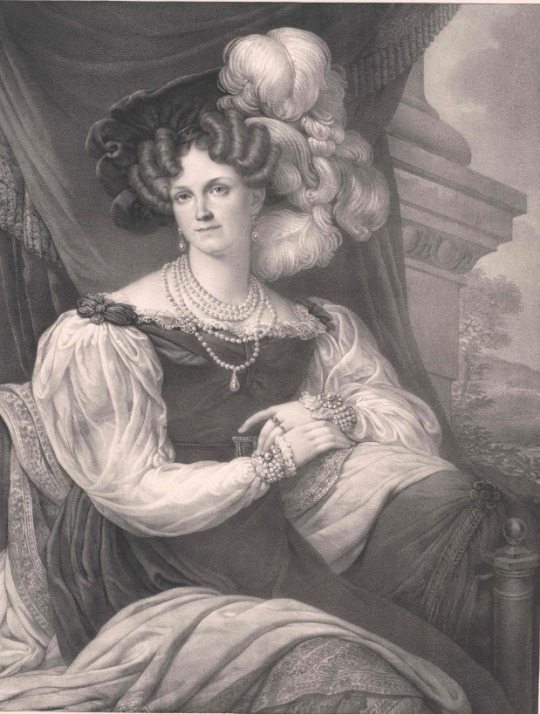
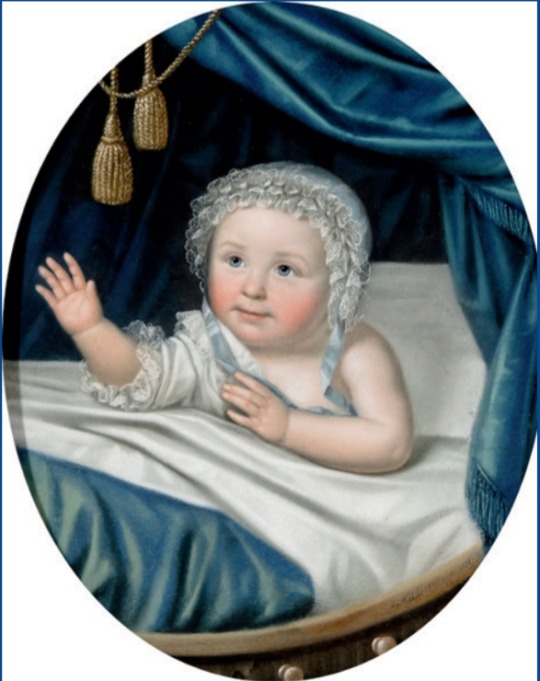
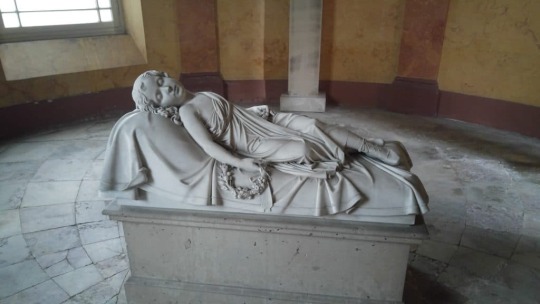

#grand ducal family of hesse-darmstadt#princess elisabeth of hesse-darmstadt (1821-1826)#Grand Duchess Wilhelmine of Hesse-Darmstadt#Princess Wilhelmine of Baden#Prinzessin Elisabeth (1821-1826)#Altes mausoleum#Old Mausoleum#Rosenhöhe#darmstadt#Too much Elizabeths
29 notes
·
View notes
Text

4 notes
·
View notes
Text

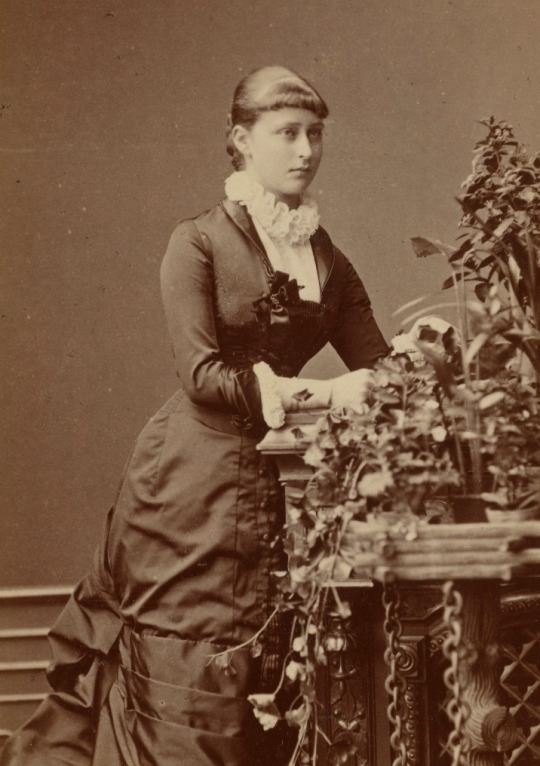

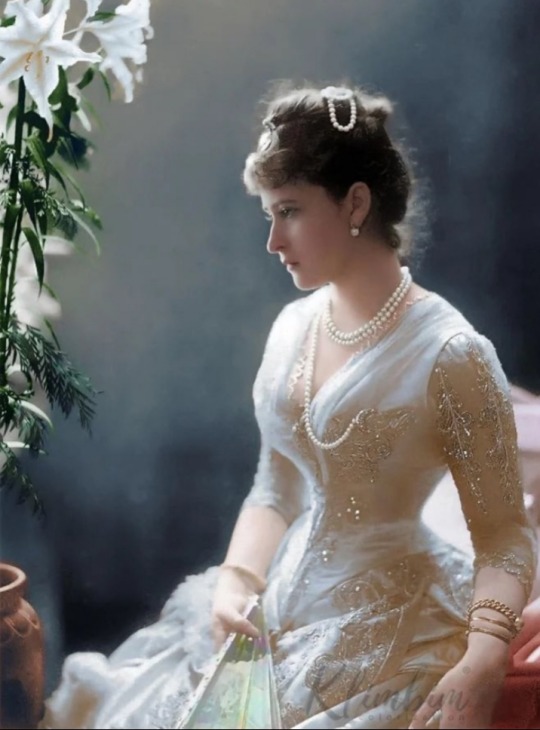
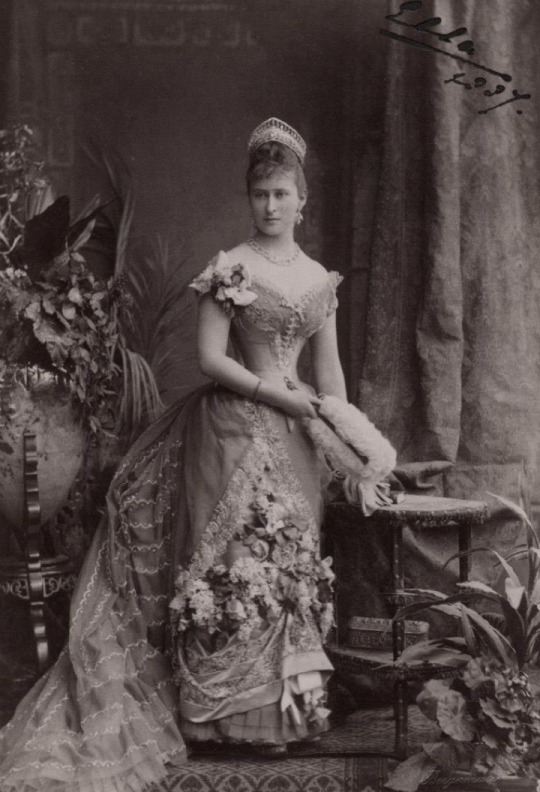
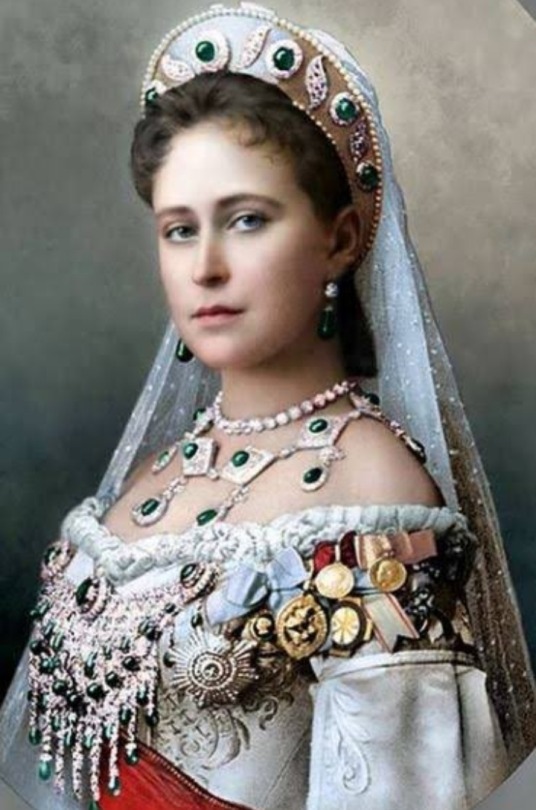
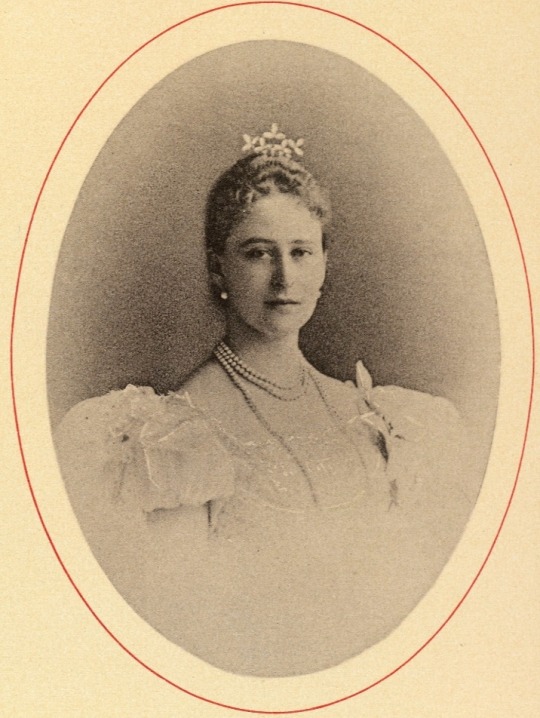
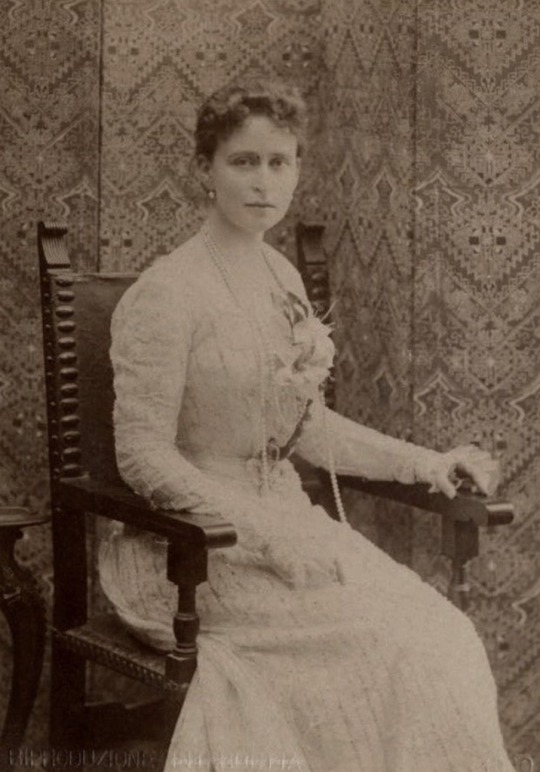


BORN ON THIS DAY:
Grand Duchess Elizabeth Feodorovna of Russia (born Princess Elisabeth of Hesse and by Rhine; 1 November 1864 – 18 July 1918) was a German Hessian and Rhenish princess of the House of Hesse-Darmstadt.
She was the wife of Grand Duke Sergei Alexandrovich of Russia, the fifth son of Emperor Alexander II of Russia and Princess Marie of Hesse and by Rhine.
A granddaughter of Queen Victoria and an older sister of Alexandra, the last Russian Empress, Elisabeth became famous in Russian society for her dignified beauty and charitable works among the poor.
After the Socialist Revolutionary Party's Combat Organization assassinated her husband with a bomb in 1905, Elisabeth publicly forgave Sergei's murderer, Ivan Kalyayev, and campaigned without success for him to be pardoned.
She then departed the Imperial Court and became a nun, founding the Marfo-Mariinsky Convent dedicated to helping the downtrodden of Moscow.
In 1918, she was arrested and ultimately killed by the Bolsheviks.
She was canonized by the Russian Orthodox Church Abroad in 1981 and by the Moscow Patriarchate in 1992 as Holy Martyr Elizabeth Feodorovna (Saint Elizabeth Romanova / Saint Elizabeth the New Martyr).
#Grand Duchess Elizabeth Feodorovna of Russia#Princess Elisabeth of Hesse and by Rhine#House of Hesse-Darmstadt#House of Saxe-Coburg and Gotha#British Royal Family
4 notes
·
View notes
Photo

#Colorized Photo#Colorization#Hesse-Darmstadt#Princess Alice#Princess Irene of Hesse#Grand Duke Louis of Hesse-Darmstadt#Prince Ernst of Hesse#Princess Elisabeth of Hesse#Princess Victoria of Hesse#Princess Marie of Hesse#1870s#Princess Alix of Hesse
7 notes
·
View notes
Text
One of my favorite little princesses… the fact that her father wrote of her as the sunshine of his life… rest in peace Prinzessin Elisabeth von Hessen-Darmstadt.

"Where Princess Ella was, no angry disputes could exist. She was so sweet and just that the other children always gave in to her arbitration. Looking back on her short life I often wonder why we did not see that she was quite too good for this world, her fit companions were the angels. She was a regular little mother, and was never so happy as with the 'tiny cousin,' as she called Anastasie." – Margaretta Eagar, Six Years at the Russian Court
#historical photos#german royalty#margaretta eagar#elisabeth of hesse#Princess Elisabeth of Hesse-Darmstadt#Hesse-Darmstadt
46 notes
·
View notes
Text
1896
THE GENTLEWOMAN. October 3 & 17
Darmstadt, October 3
The Grand Duke and Duchess of Hesse intend to move with their Court from the Jagdschloss Wolfsgarten to the New Palace at Darmstadt, on Tuesday, the 6th int., in order to be there at the arrival of the Tsar and Tsaretsa.
The Grand Duke and Duchess Serge of Russia arrived at Darmstadt from Venice last Wednesday, and went immediately to Wolfsgarten.
The Princess Louis of Battenberg is now at Heiligenberg with their children, and pays frequent visits to the Grand Duke and Duchess.
Little Princess Elizabeth is already talking about her cousin, Grand Duchess Olga, and is delighted that she is soon to have a little companion to play with. Her Grand Ducal Highness is a very pretty, clever child, and remarkably lively.

Darmstadt, October 17
The little Princess Elizabeth of Hesse is delighted with her still smaller cousin, Grand Duchess Olga, and to see the babies playing together is an unfailing source of delight to the two young mothers. Both are very pretty children, and are extremely forward for their age.
(...)
On Tuesday last the Grand Duke and Duchess drove with their Imperial guests to Heiligenberg, where they had tea with the Princess Louis of Battenberg; and the next afternoon was spent at Jagdschloss Wolfsgarten, where they also had tea, and returned in the evening to Darmstadt.
source: the British Newspaper Archive
image: Hessian State Archives, Elisabeth and Olga sit on their mothers' laps and pose in a group picture taken in June 1896.
9 notes
·
View notes
Note
Hello love your blog. How often did the otmaa children meet up with their cousin ella? were they close family members
Hello anon!!! I’m so glad you love my blog! Thank you so much for viewing it also as I try hard to make it a nice space!
Princess Elisabeth of Hesse was OTMA’s maternal first cousin (Ella’s father was siblings with OTMA’s mother Alix (Empress Alexandra Feodorovna)) and both the parents of the girls and the girls were very close. Imagine if you had a favorite cousin who lived in another country within somewhat close proximity, would you want to visit them as much as you could? Well that was the case for the girls.
They would meet up about once or twice a year, sometimes they wouldn’t meet up every year like in 1902, 1900, or 1898 and when they didn’t meet at all. Here are some photos of the girls with Ella to put into context how often they met.
1896 (family gathering at Ilinskoe, Ella and Olga were both about a year old)


1897 (Hessian Royal Family gathering, Olga and Ella were about 3 and Tatiana was a baby)

1899 (Family gathering at Darmstadt, Ella and Olga were about 4, Tatiana was 2, and Maria was a baby but she is not pictured in or with Ella on this trip)


1901 (Meeting at the Winter Palace, Ella and Olga were about 6, Tatiana and Maria were about 4 and 2, Anastasia was not born yet)


1903 (this would’ve been their last meeting as Ella died while on a trip to Skiernewice Poland with the Russian Imperial Family.)


Ella and OTMA were VERY close, they were each others favorite playmates and sometimes felt more like sisters than cousins, Margaretta Eagar (nanny to OTMA) has fond memories of the girls together in 1903:
“Where Princess Ella was, no angry disputes could exist. She was so sweet and just that the other children always gave in to her arbitration. Looking back on her short life I often wonder why we did not see that she was quite too good for this world, her fit companions were the angels. She was a regular little mother, and was never so happy as with the "tiny cousin," as she called Anastasie.”
“It was a pretty sight to see her riding with the two eldest cousins in the riding-school; she mounted on a great white horse and her cousins on little ponies. She rode wonderfully well, and would take either of the little ones before her on the saddle, and give them a ride round the school.”
“One day she and Tatiana were wonderfully busy and mysterious, running in and out of the rooms, and exploding into laughter every now and then. In the evening after they were in bed Tatiana took from under her pillow a little box which dear cousin Ella had prepared for her. This contained some little coloured stones which they had picked out of the gravel the day before, some bits of matches, luminous ends, of course, the sand-paper off a match-box and some tissue paper. This was a toy which they had prepared. After Tatiana was in bed, if she felt lonely she was to sit up in bed, light a match upon the sand-paper, set fire to the tissue paper, and by its light to play with the stones. Well, of course, that could not be allowed, and the poor little Princess was overwhelmed when I explained to her that they might all have been burned in their beds.”
“The little Princess was full of life and fun. I never remember to have seen her in higher spirits than she was on Saturday evening. She prepared and carried out an innocent little practical joke on her father and the Empress. She asked me to put her three eldest cousins in her bed, and leave little Anastasie alone in her bedroom. "When auntie Alix and papa come," said the child, "auntie Alix will be looking everywhere for her children, and papa will not know how he has got four." Accordingly it was done, and I stepped into the corridor to ask the Empress and the Grand Duke to be very much surprised. They were, of course, exceedingly surprised, and the Empress pretended to be much frightened, to the child's great delight. You could hear her laughter all through the house, as one by one the cousins were disclosed.”
Source
They (the elder girls on particular) also wrote to eachother and sent eachother gifts like photos of each other or books or small trinkets. Here is an example of one of the items:

(Photograph of Ella’s mother (Princess Victoria Melita, later Grand Duchess Viktoria Feodorovna) and three aunts (Princesses Beatrice, Alexandra and Marie, later Queen of Romania) Inscribed “My Love Olga Dear, Ella”
I hope this gives you a rough estimate on how close the group was and how much both Ella and OTMA meant to each other. Thank you for asking!
Also another great resource for all things Ella is @princesselisabethofhesse (who I got a lot of these photos from 🤍) where I learned a lot about Ella, please go check out her blog as it is a great resource and can answer a lot more in detail about anything Ella related!
#answered ask#princess elisabeth of hesse#otma#olga nikolaevna#romanov#romanovs#maria nikolaevna#tatiana nikolaevna#anastasia nikolaevna#Ella of hesse#elisabeth of hesse#princess elisabeth#1896#1897#1899#1901#1903#Victorian era
15 notes
·
View notes
Text

Anna Elisabeth Auguste Alexandrine, Duchess of Mecklenburg-Schwerin was half sister to Grand Duchess Marie Pavlovna of Russia (Grand Duchess Vladimir), cousin to Victoria, Ella, Irene and Alix of Hesse, and aunt to princess Cecilie of Mecklenburg-Schwerin (future crown princess of Prussia). Anna died when she was 16.
"My grandfather’s second marriage was terminated by the early death of the Grand Duchess, formerly Princess Anna of Hessen-Darmstadt, when her first child, a daughter, was born. Her daughter too died at an early age, when she was only sixteen ; she was worshipped in our family almost like a young saint".
The memoirs of the Crown Princess Cecilie
"...there was one daughter, Anna, who married the Grand Duke of Mecklenburg-Schwerin as his second wife, and died in childbirth. They had only one little girl, Annchen, who died at 16. This was a very delicate and nervous child. We used to play with her when she paid her yearly visit to my grandparents but we were so much more robust than she and so wild that my grandmother used always to forbid us exciting her".
"Recollections: The Memoirs of Victoria Marchioness of Milford Haven".
18 notes
·
View notes
Text
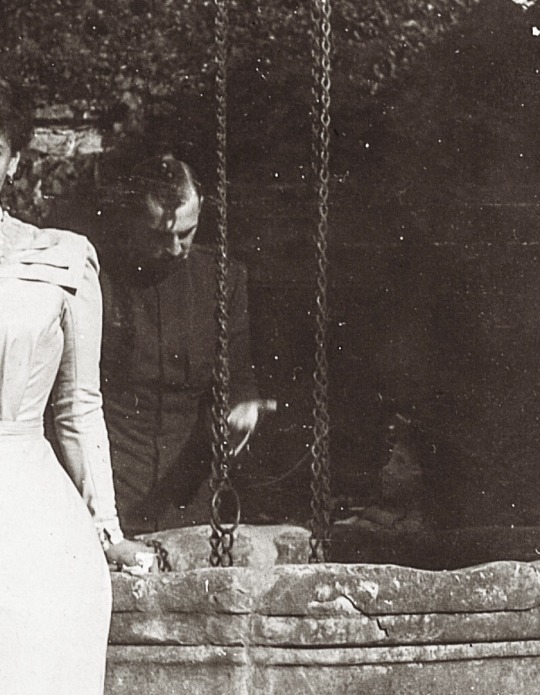
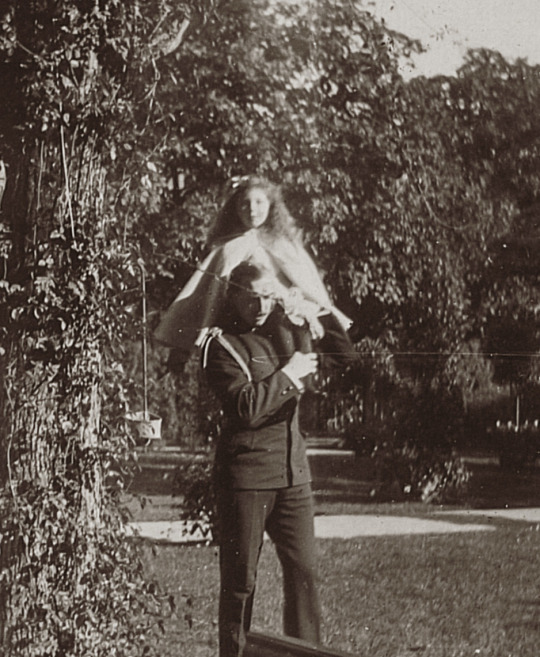
Candid moments between Prince Nicholas of Greece and Denmark aka “Greek Nicky” with his 1st cousin once removed, Princess Elisabeth “Ella” of Hesse, Wolfsgarten, Darmstadt, 1899
#awe cuties 🥰#✨😍🤍#prince nicholas of greece and denmark#prince Nicholas#greek royal family#princess elisabeth of hesse#ella of hesse#elisabeth of hesse#hessian royal family#hesse#wolfsgarten#1899#Nicholas of Greece and Denmark#greek Nicky#danish royal family
22 notes
·
View notes
Text

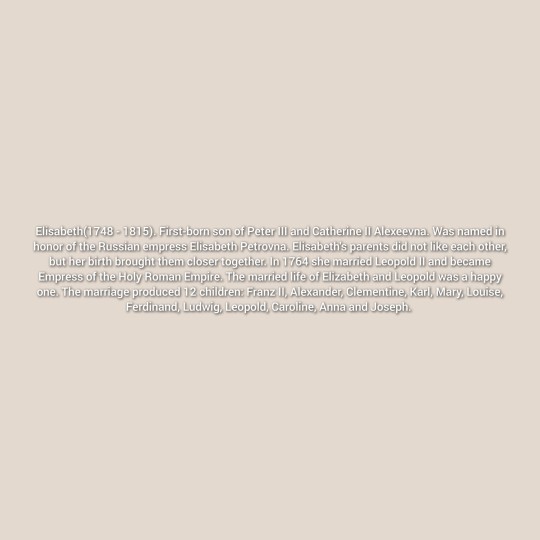




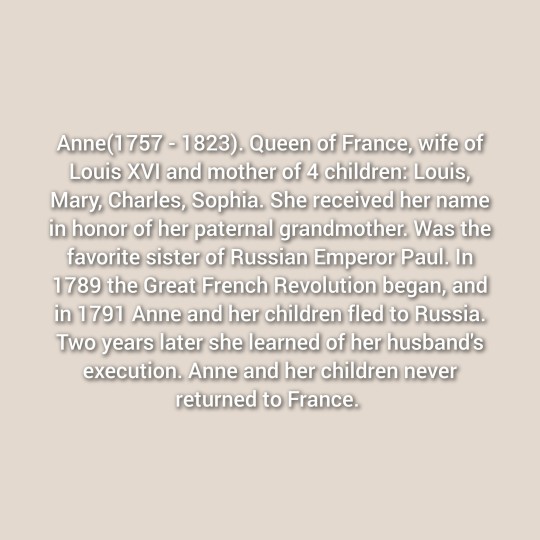



The Romanovs AU: Peter III(1728 - 1791) and Catherine II(1729 - 1792).
In 1745, the Prussian princess Sophia Augusta Frederica of Anhalt-Zerbst became the wife of the heir to the Russian throne, Peter, and converted to Orthodoxy. After adopting the Provo-Slavism, she ceased to be a Prussian princess and became the Russian Tsarevna Catherine Elekseevna. Peter did not love his wife, but after the birth of their eldest daughter he looked at her differently, and the birth of a son finally brought the couple closer together. In 1762 the Russian Empress Elisabeth died and Peter became Emperor. He reigned in the Russian Empire together with his wife. Almost 30 years they ruled in Russia, but in 1791 Peter died suddenly. For Catherine the death of her husband was a strong blow, she began to lead a reclusive life and did not want to see anyone except her eldest son, as he was similar to her late husband. A year later, Catherine herself died of a heart attack.
Children of Peter III and Catherine:
Elisabeth(1748 - 1815). First-born son of Peter III and Catherine II Alexeevna. Was named in honor of the Russian empress Elisabeth Petrovna. Elisabeth's parents did not like each other, but her birth brought them closer together. In 1764 she married Leopold II and became Empress of the Holy Roman Empire. The married life of Elizabeth and Leopold was a happy one. The marriage produced 12 children: Franz II, Alexander, Clementine, Karl, Mary, Louise, Ferdinand, Ludwig, Leopold, Caroline, Anna and Joseph.
Mary(1750 - 1825). Duchess of Hesse. In 1770 married Ludwig I of Hesse. She was loved not only by her husband and his relatives, but also by her subjects. Mother of 8 children: Ludwig II, Louise, George, Friedrich, Emil, Gustav, Charles, Henrietta.
Paul(1754 - 1822). Emperor of All Russia. The long-awaited heir to the Russian throne. After ascending the throne, Paul continued the work of his grandfather Peter I the Great. Under his rule the Russian Empire reached the peak of its power. Reforms beneficial to the state were adopted, and new and favorable treaties with other countries were concluded. Husband:
1)Augusta Hesse of Darmstadt(died in childbirth).
2)Sophia of Württemberg.
Father of 11 children: stillborn son, Alexander I, Constantine, Alexandra, Elena, Mary, Catherine, Olga, Anna, Nicholas I, Michael.
Anne(1757 - 1823). Queen of France, wife of Louis XVI and mother of 4 children: Louis, Mary, Charles, Sophia. She received her name in honor of her paternal grandmother. Was the favorite sister of Russian Emperor Paul. In 1789 the Great French Revolution began, and in 1791 Anne and her children fled to Russia. Two years later she learned of her husband's execution. Anne and her children never returned to France.
Alexey(1762 - 1812). The last child of Peter III and Catherine II Elekseevna. General Fieldzeichmeister. He was married to Louis XVI's sister Elizabeth. Father of 3 children: Mary, Catherine, Anton.
Романовы AU: Пётр III(1728 - 1791 ) и Екатерина II(1729 - 1792).
В 1745 году прусская принцесса София Августа Фредерика Ангальт-Цербстская стала женой наследника русского престола Петра и приняла провославие. После принятия провославия она перестала быть прусской принцессой и стала русской царевной Екатериной Елексеевной. Пётр не любил свою жену, но после рождения их старшей дочери он по другому посмотрел на нее, а рождение сына окончательно сблизило супругов. В 1762 году умерла российская императрица Елизавета Петровна и Пётр становится императором. Царствовал в российской империи совместно с женой. Почти 30 лет они правили Россией, но в 1791 году Пётр скоропостижно скончался. Для Екатерины смерть мужа стала сильным ударом, она начала вести затворнический образ жизни и никого не хотела видеть кроме старшего сына, так как он был похож на её покойного мужа. А через год не стало и самой Екатерины, она умерла от сердечного приступа.
Дети Петра III и Екатерины II:
Елизавета(1748 - 1815). Первенец Петра III и Екатерины II Алексеевны. Была названа в честь российской импер��трицы Елизаветы Петровны. Родители Елизаветы не любили друг друга, но её рождение их сблизило. В 1764 году вышла замуж за Леопольда II и стала императрицей Священной Римской империи. Супружеская жизнь Елизаветы и Леопольда была счастливой. В браке родилось 12 детей: Франц II, Александр, Клементина, Карл, Мария, Луиза Фердинанд, Людвиг, Леопольд, Каролина, Анна и Иосиф.
Мария(1750 - 1825). Герцогиня Гессенская. В 1770 вышла замуж за Людвиг I Гессенского. Её любил не только муж и его родственники, но и подданные. Мать 8 детей: Людвиг II, Луиза, Георг, Фридрих, Эмиль, Густав, Карл, Генриетта.
Павел(1754 - 1822). Император Всероссийский. Долгожданный наследник русского престола. После восшествия на престол Павел продолжил дело своего деда Петра I Великого. При его правлении российская империя достигла пика своей могущественности. Были приняты полезные для государства реформы, а также заключены новые выгодные договора с другими странами. Муж:
1)Августы Гессен Дармштадтской(умерла при родах).
2)Софии Вюртембергской.
Отец 11 детей: мертворожденный сын, Александр I, Константин, Александра, Елена, Мария, Екатерина, Ольга, Анна, Николай I, Михаил.
Анна(1757 - 1823). Королева Франции, жена Людовика XVI и мать 4 детей: Людовик, Мария, Шарль, София. Получила свое имя в честь бабушки по отцовской линии. Была любимой сестрой российского императора Павла. В 1789 году началась Великая французская революция, а в 1791 Анна с детьми сбежала в Россию. Через 2 года она узнала о казни мужа. Анна и её дети во Францию больше не вернулись.
Алексей(1762 - 1812). Последний ребёнок Петра III и Екатерины II Елексеевны. Генерал фельдцейхмейстер. Был женат на сестре Людовика XVI Елизавете. Отец 3 детей: Мария, Екатерина, Антон.
#history#history au#romanovs#russian#russian imperial family#royal family#royalty#russians#romanov family#18th century#19th century#17th century#russian history#russia#russian royalty#royals#royal#house of romanov#House of romanovs
7 notes
·
View notes
Text
Fragments of fright (9)
From Richard Cavendish’s The Great Book of the Supernatural
THE MESSENGERS OF THE AFTERLIFE
Most people do not know when they will die - but a few of them are apparently warned of their imminent demise, thanks to the appearance of a ghost. This messenger of the afterlife can be a wraith, or a mysterious animal, and many families are proud of "owning" one.
The Hohenzollern dynasty, which reigned successively over the Brandeburg, Prussia and Germany (until the abdication of the kaiser Wilhelm II at the end of WWI) was boasting the existence of a "family ghost". This specter tied to their bloodline was a White Lady - a female ghost dressed in white, with a mourning armband, usually seen before the death of a member of the family, and appearing in the royal residences of Berlin or other Germany regions. It was believed that she might be the ghost of a princess of the 15th century, who was cruelly abused by her husband, who was a Hohenzollern. The dynasty of the Hesse of Darmstadt (Germany) also had its death herald - a Black Lady this time, in a mourning outfit, her face hidden by a dark veil. This ghost was supposed to be the archduchess Maria-Anna, wife of the archduke Ferdinand.
In the Danish royal family meanwhile, disasters were believed to be announced by the apparition at Gurre, south of Helsingor (a location that inspired the setting of Shakespeare's Hamlet), of the ghost of king Valdemar IV, who ruled on the Denmark in th 14th century and died at Gure in 1375. Another strange fact of the history of the Danish crown concerns the queen Astrid, killed in 1935 by a car accident. Some times after her death, she supposedly appeared before numerous people during a spiritism séance organized at Copenhague by the medium Einar Nielsen. A picture of her "manifestation" was apparently taken - but unfortunately, these kind of pictures are very easy to falsify and thus do not make an actual, solid proof of the ghost's apparition.
The Hasburgs, who ruled over the Austro-Hungarian Empire, were traditionally warned of any upcoming tragedy by the appearance of a group of great white birds circling in the sky. They were seen in 1889, soon before the double suicide of the heir-prince Rudolf and his mistress in Mayerling. Later, the emperor Franz-Josef the First also saw them in 1898, on the eve of the murder of his beloved Elisabeth. Finally, these sinister birds were spotted in 1914, before the Sarajevo attack which killed the archduke Franz-Ferdinand and caused World War I.
The most famous of these "messengers of death" is without a doubt the Irish banshee, which makes the pride and glory of the greatest and oldest families of the island. The banshees howls and wails with a melancholic voice through the night, crying the death of a family's member soon before it actually happens. She can appear as a beautiful maiden with a red shirt, or a green dress under a gray cloak ; or she can appear as an old hag. This "dual face", the beautiful maiden and the ugly hag, were the usual manifestations and appearances of the great goddesses of the pre-Christian Celtic religion, of which the banshee seems to be a remnant. It seems that getting rid of a banshee is hard, since there are records of them still wailing near the old domains of families that left Ireland a long time ago. A few years before the publication of this book, an American that was visiting the Aran island in the Galway bay, organized a party, with lot of music and dancing. As the night was ending, the young man returned home, playing accordion. The noise he made distressed the neighborhood, and someone had to go explain to a poor frightened old man that what he heard wasn't the screams of a banshee, but the sounds of a drunk playing very badly the accordion. Reassured, the old man knew three more weeks of peace... Until he heard the ACTUAL wails of the banshee, and soon after died.
According to a very old tradition, the death of the bishops of Salisbury is announced by the arrival of mysterious white birds flyig over the plain. Other bad omens - not necessarily meaning "death" - are the black dogs, or rather the black hounds, usually of an enormous size, that supposedly haunt the British countryside. Peel's castle, on the isle of Man, is the lair of one of those monsters, the Moddy Dhu, whose mere sight causes a person's death. You will also be doomed to die if you meet the Shriker dog, which hides in the Burnley cemetery (Lancashire). Many more sinisters black hounds are believe to wander on the paths leading to cemeteries. In a lot of popular beliefs and local folklore, dogs are associated with death, probably because in the distant past hungry dogs used to dig up corpses to eat them. There could also be something related to the strong belief that dogs are able to sense entities invisible to humans. Ghosts of dogs are particularly dreaded in the East-Anglia, where strikes the formidable Black Shuck, whose only eye shines in the darkness.
During World War II, an American air-pilot and his wife lived in Walberswick, in the Suffolk, and they had there a terrifying experience. During one whole night, an enormous black dog tried to enter in their house, and they only prevented it from doing so by piling up furniture in front of the door, that the animal nearly split open. At dawn, the beast left, but without leaving any prints in the mud surrounding the house. This event happened during a storm night - which reminds one of the old beliefs claiming that storms are caused by the mad run in the countryside of a pack of infernal hounds, whose howls causes death, madness and misfortune. In some regions, these hounds are led by the "Wild Hunter". In Denmark, it is king Valdemar that leads the pack, in Normandy the Devil himself ; in northern England it is "Gabriel's hounds" led by the Angel of Death, while in the Dartmoor the dogs follow sir Francis Drake riding a hearse. All these legends inspired without a doubt Conan Doyle when he wrote one of Sherlock Holmes' most famous adventures - The Hound of the Baskervilles.
#fragments of fright#supernatural#irish folklore#banshee#black hound#british folklore#white ladies#ghosts#danish legends#german legends
5 notes
·
View notes
Text
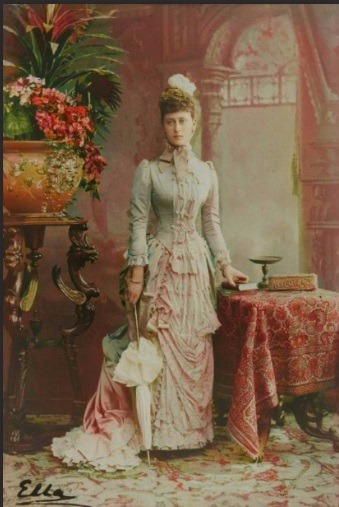
0 notes
Photo










House of Hesse & of Romanov: Princess Elisabeth “Ella” of Hesse and by Rhine aka Grand Duchess Elizabeth Feodorovna of Russia
Elisabeth was born as the second oldest child and daughter to Louis IV, The Grand Duke of Hesse and by Rhine, and his wife Princess Alice of the United Kingdom, a daughter of Queen Victoria. In German, she is also known as Elisabeth of Hessen-Darmstadt. One of her younger sisters was the last Russian Empress Alexandra Feodorovna aka Princess Alix of Hesse and by Rhine. By her family, she was nicknamed Ella.
Elisabeth grew up very modestly for her status. She had to clean her own room and her mother made the dresses for the children themselves. Elisabeth often accompanied her mother Alice to a nearby hospital during the Austro-Prussian war. Elisabeth grew up bilingual. While she spoke English with her mother, she spoke German with her father.
Ella was a highly sought after bride. The future German Emperor Wilhelm II fell in love with her when he was still a student and proposed to her but she declined. A match supported by her grandmother Queen Victoria was with Frederick II, Grand Duke of Baden. But again Ella declined and caused a major disruption in her relationship with Empress Augusta and it took some time for her to forgive the young princess for the rejection of her grandson.
The one who could finally win her heart was Grand Duke Sergei Alexandrovich of Russia. She knew him since childhood because her great-aunt Empress Maria Alexandrovna aka Princess Marie of Hesse and by Rhine often visted her old home and took her sons with her. They bonded over the mutual experience of losing their parents and later also over their similar interest in art and religion. However, he had to proposed twice before Elisabeth accepted, much to the dismay of her grandmother Queen Victoria. The couple married on June 15th, 1884, in St. Petersburg. Ella could have legally kept her Protestant faith but she chose to convert in 1891, taking the not much changed name of Elizabeth Feodorovna.
Unlike her sister Alix, Elisabeth made a good impression on the Russian people and aristocracy. However, her marriage did not turn out happy. Sergei was a jealous man although she gave him no reason for it. The couple did not have children of their own but hosted parties especially for children and eventually took in Sergei’s niece and nephew Grand Duchess Maria Pavlovna and Grand Duke Dmitri Pavlovich.
Elisabeth encouraged Nicholas II. to pursue her sister Alix against her British families wishes. She was also the one who convinced her sister to convert to Orthodoxy after her initial refusal of Nicholas’ proposal because of a matter of faith.
Elisabeth’s husband Sergei was assassinated on February 18th, 1905. It came to her as a shock but she remained incredibly calm. Her family feared a nervous breakdown but it did not happen. Instead Elisabeth forbade herself from crying during mourning. She eventually even went to visit the assassin in prison and after hearing his reason for killing her husband, begged him to swallow his pride and she would petition to save his life. He denied but she still asked her brother-in-law to forgive him his crimes.
The death of her husband was a changing point in Ella’s life. She became a vegetarian and by 1909 a nun. After selling all her jewellery, including her wedding ring, and other items of worth, she founded the Convent of Saints Martha and Mary and became its abbess. For many years, Elisabeth's institution helped the poor and the orphans in Moscow by fostering the prayer and charity of devout women.
Elisabeth met her sister Alix for the last time in 1916, expressing concern about Rasputin’s influence over her and politics. Ella might have known about the murder of Rasputin beforehand since she sent telegrams out the night of it before the news was released to the public. Furthermore, she stated that the killing of Raputin had been a patriotic act.
Even though, she was a nun, she was still regarded as a member of the Romanov family during the Russian Revolution. She was exiled and moved across the country along with other relatives in 1918. Their last stop was Alapayevsk where they arrived on Max 20th, 1918. Elisabeth and other Romanovs were killed in the night from the 17th to 18th July 1918. It was later discovered that Ella and other did not immediately die from the gunshots. Ella for example died of wounds she suffered when falling into the pit but she still nursed Prince Ioann Konstantinovich by bandaging his head. Elisabeth’s final resting place is in the Church of Mary Magdalene in Jerusalem.
// Elsie Benett as Ella in The Last Czars - Season 01
#historic women#women in history#period drama#perioddramaedit#The Last Czars#House of Romanov#elisabeth feodorovna#Elisabeth of Hesse and by Rhine#Elisabeth of Hesse-Darmstadt#1800s#1900s#19th century#20th century#House of Hesse#House of Hesse-Darmstadt#German Romanovs#Women of the House of Hesse
373 notes
·
View notes
Text


Watercolors of Elisabeth of Hesse-Darmstadt by her grandmother, Queen Victoria, June 1875.
#elisabeth of hesse#elizabeth feodorovna#1875#1870s#watercolor painting#watercolor#pencil#pencil and watercolor#portrait#german royalty#english royalty#history#historical photos
24 notes
·
View notes
Text
1899
Portrait of Princess Elisabeth of Hesse

Portrait of Princess Elisabeth of Hesse by court painter Josefine Swoboda (1861-1924).
Watercolour.
At present, this portrait belongs to the House of Hesse and is kept in Darmstadt.
It was probably made in Summer 1899, while Elisabeth stayed with her parents at Windsor visiting Queen Victoria. Apparently Swoboda made more than one copy of the same portrait. In fact, the copy made for Queen Victoria is housed in the Print Room at Windsor Castle, where it can be seen by appointment:

sources: first portrait, Thomas Aufleger’s latest book “Geschehnisse und Menschen. Erinnerungen von Ernst Ludwig von Hessen und bei Rhein”. ©Hessian State Archive; second portrait, Royal Collection Trust.
8 notes
·
View notes
Text
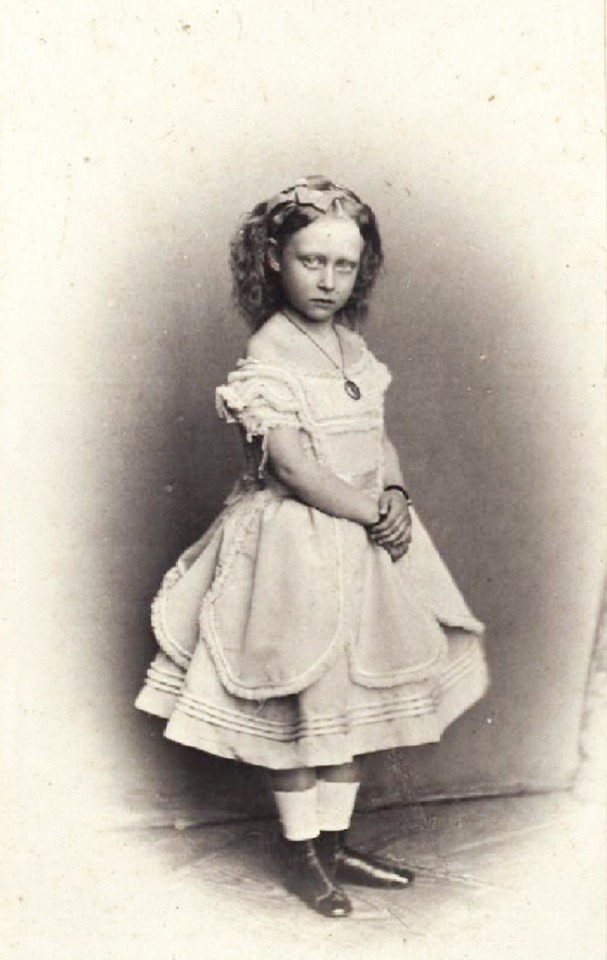

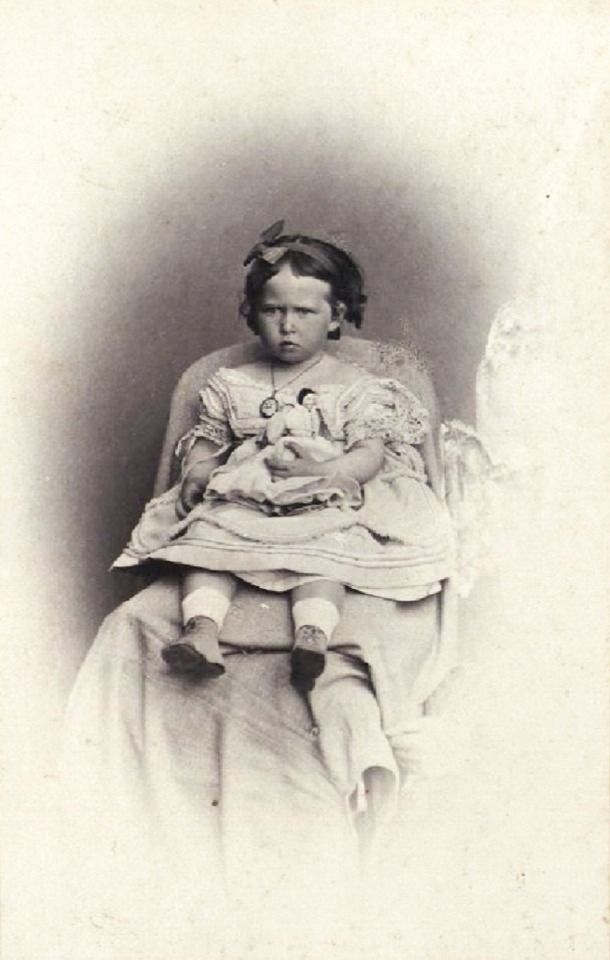
Hessian Princesses, c. 1868.
Victoria, Elisabeth and Irene, granddaughters of Queen Victoria.
#princess victoria of hesse and by rhine#princess irene of hesse and by rhine#hesse#hesse-darmstadt#german royalty#german royal#1868#1860s#princess elisabeth of hesse and by rhine
25 notes
·
View notes